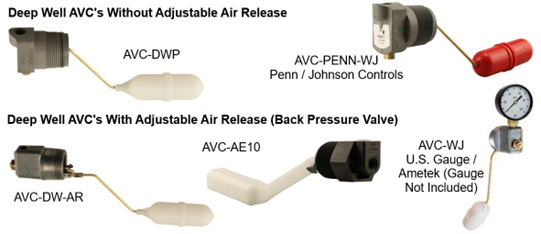Is it normal to hear a hissing sound from my deep well air volume control?
Is it normal to hear a hissing sound from my deep well air volume control?

Because the snifter valve / bleeder system will usually push more air into the water tank than is needed, the deep well air volume control (AVC), also referred to as an air release valve, is mounted approximately ½ way up the hydropneumatics (galvanized) water tank. The purpose of installing the AVC is to purge excess air from the water tank as necessary. So, if you hear air hissing from the AVC’s air purge valve port, this is normal and indicates the control is working properly. Sometimes there may be moisture or a few water droplets that get expelled along with the released air, this is condensate from the inside of the tank and is not an indication that the control is defective.
When the water level rises it lifts the float and closes the valve stopping the air flow out of the tank. As the water continues to rise compressing the air in the upper chamber, the closed valve prevents water from escaping out of the air release port.
NOTE: If there is water leaking from the release port after the float has closed the air release valve, it is an indication that the valve may have foreign debris stuck in it or that the valve is worn and replacement of the AVC is required.

For more information on deep well air volume controls:
https://support.boshart.com/deep-well-air-volume-controls-avc-a.k.a.-air-release-valves
NOTE: You should be concerned when you do not hear the air hissing noise. Usually, the check valve stops holding properly, leaking back, and pressurizing the drop pipe. Then, the bleeder in the well cannot open to drain the pipe to re-charge with air for the next injection on pump start up in the next pumping cycle. If this happens then you won't hear air coming into the tank, and soon your tank will become waterlogged and the pump starts cycling on and off too often.
